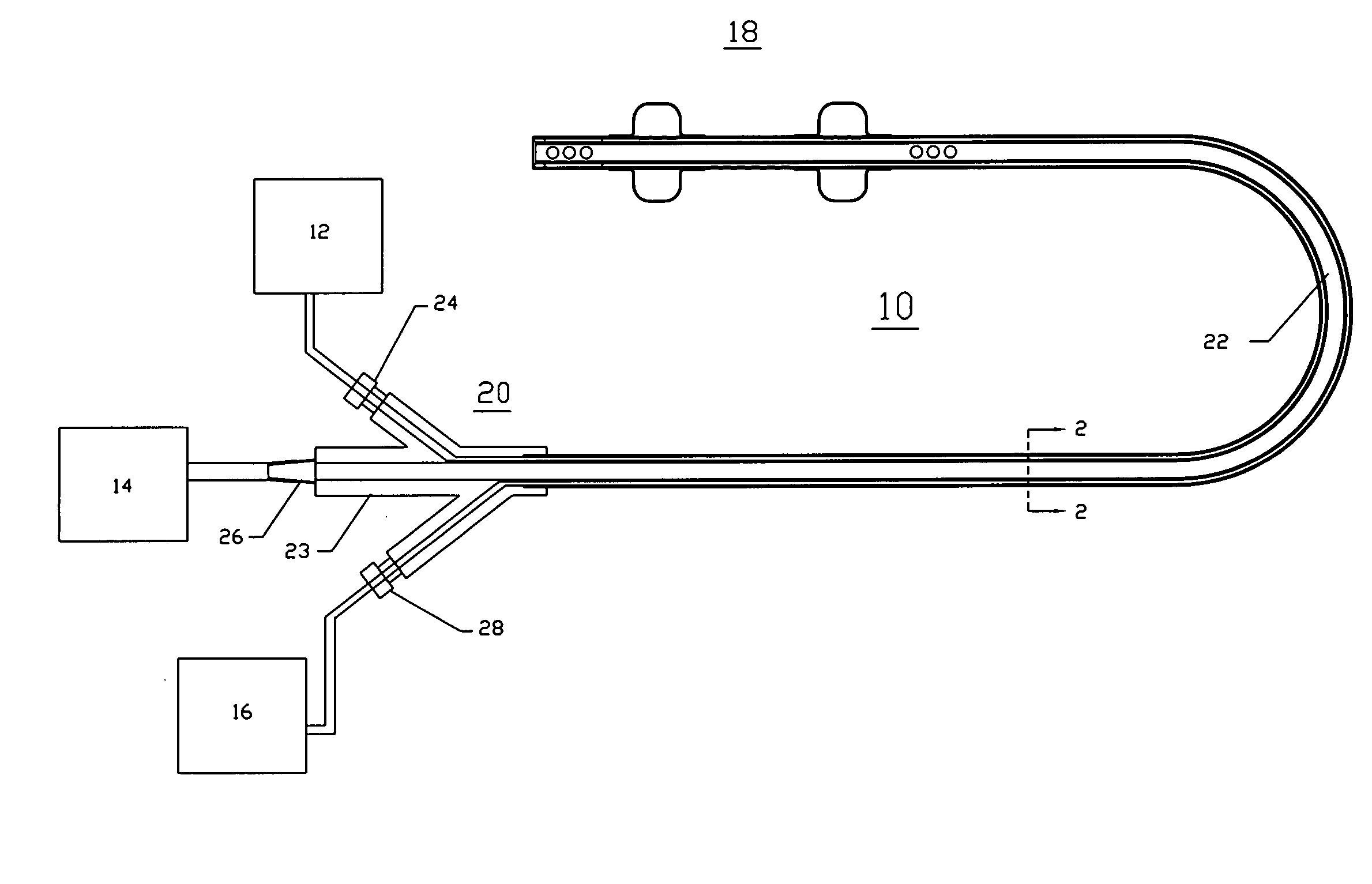Method and apparatus for venous drainage and retrograde coronary perfusion
a technology of retrograde coronary perfusion and venous drainage, which is applied in the direction of balloon catheters, surgery, other medical devices, etc., can solve the problems of multiple cannulae, ineffective and incomplete, and difficulty in antegrade perfusion
- Summary
- Abstract
- Description
- Claims
- Application Information
AI Technical Summary
Benefits of technology
Problems solved by technology
Method used
Image
Examples
Embodiment Construction
[0033] As used herein the terms distal and proximal are used to clarify the location of various points along the axial length of the venous drainage and retrograde perfusion catheter or cannula. Points are defined with respect to the end grasped by the user and the end that is inserted in the patient in the same manner as would one skilled in the art of medical device catheter construction. The proximal end of the catheter or cannula is defined as that end closest to the user or operator of the catheter or cannula while the distal end of the catheter or cannula is defined as that end that is inserted into the patient.
[0034]FIG. 1 illustrates a catheter, tube or cannula 10 of an embodiment of the invention connected to a cardioplegia infusion system or set 12, a venous drainage collection system 14 and an occlusion enabling system 16. In this preferred embodiment, the occlusion enabling system 16 is a balloon inflation system. The catheter 10 comprises a distal tip 18, a proximal en...
PUM
 Login to View More
Login to View More Abstract
Description
Claims
Application Information
 Login to View More
Login to View More - R&D
- Intellectual Property
- Life Sciences
- Materials
- Tech Scout
- Unparalleled Data Quality
- Higher Quality Content
- 60% Fewer Hallucinations
Browse by: Latest US Patents, China's latest patents, Technical Efficacy Thesaurus, Application Domain, Technology Topic, Popular Technical Reports.
© 2025 PatSnap. All rights reserved.Legal|Privacy policy|Modern Slavery Act Transparency Statement|Sitemap|About US| Contact US: help@patsnap.com



